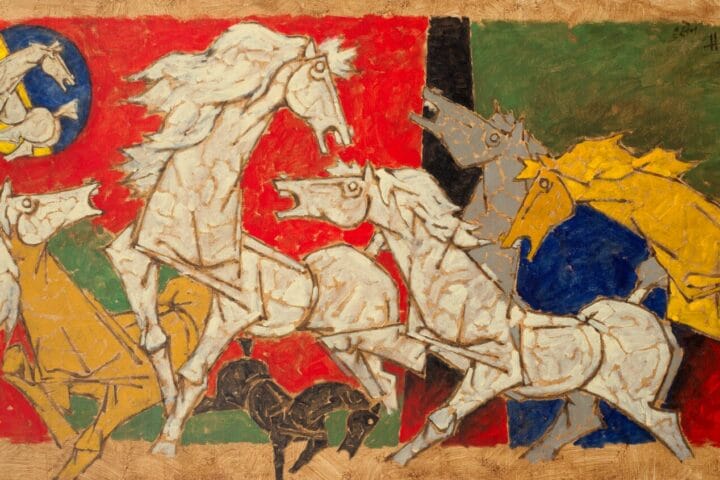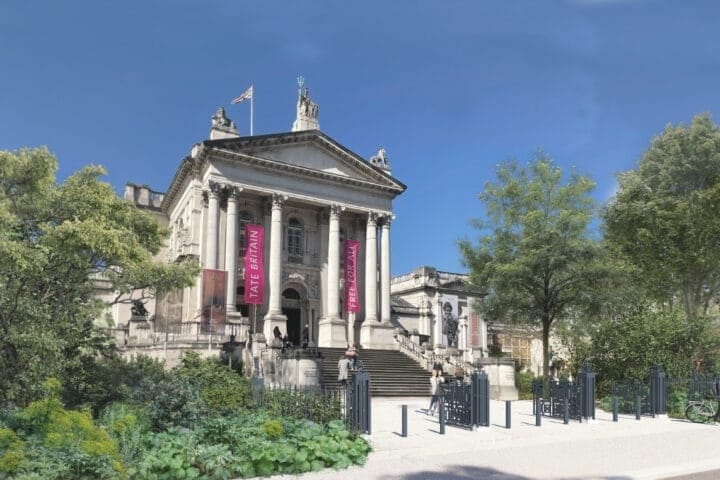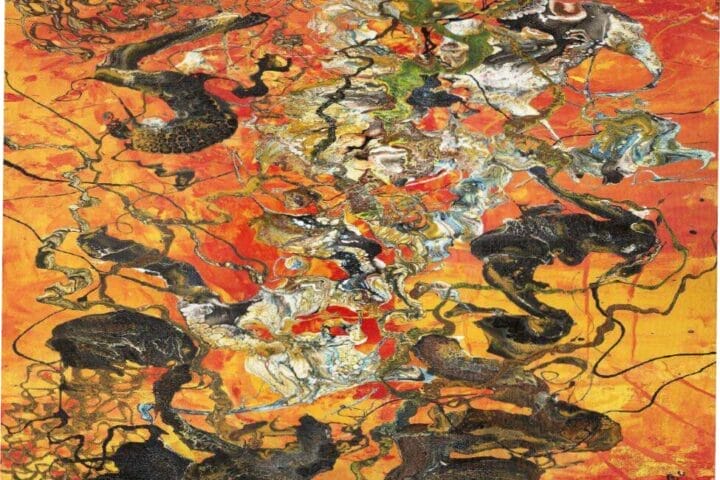We are delighted to welcome J’adore vous faire rire (I love making you laugh), Neïla Czermak Ichti’s second solo exhibition, featuring a previously unseen collection of drawings and paintings.

I love being my friend’s Bozo !!!, 2022 acrylique, encre et collage sur carton 30,5 x 33 cm
It is often said, and rightly so, that talismans are all about protection. They protect against the forces of evil, ward off the evil eye, and give courage in the face of adversity. For my part, I like to think of talismans as the catalysts of faith. We leave our emotions in them -sadness, anger, love, happiness- and the magical object changes this emotional matter into a very dark substance able to connect us to the world. This substance, sometimes called “trust” or “faith”, but everybody knows it is mainly love. At a time of necessary struggles, talismans tell love stories, which are also our stories, and have always been so.
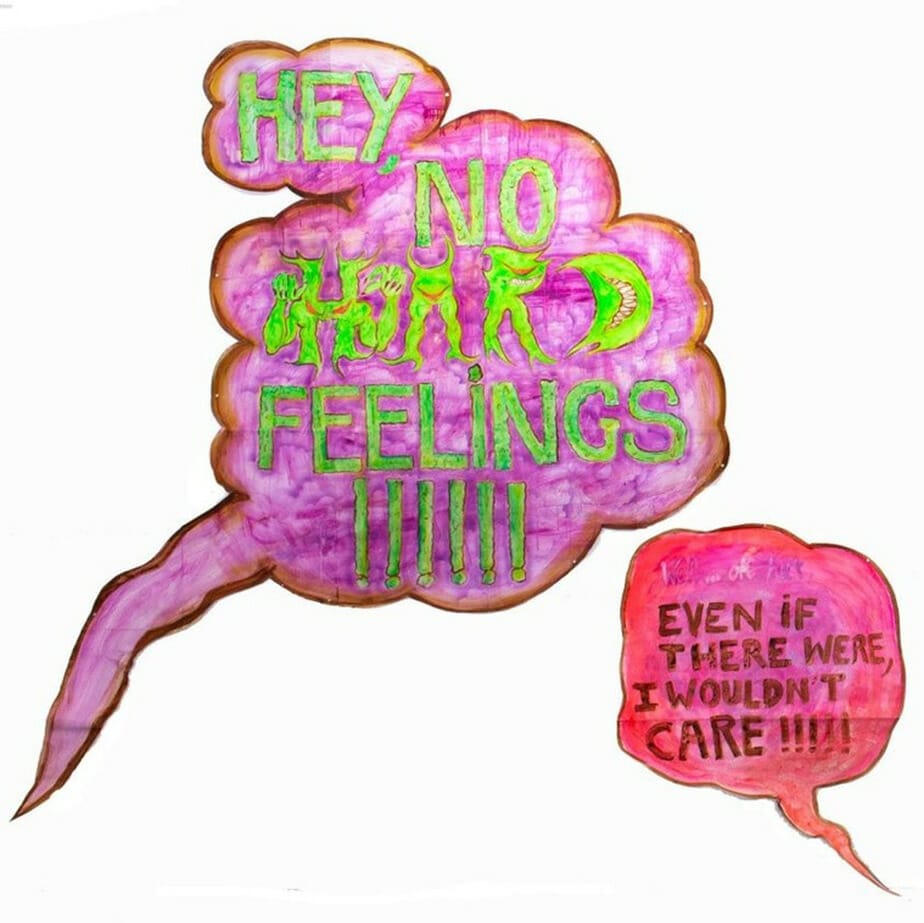
270 x 245 cm (approx) / 110 x 120 cm (approx)
The word superstition comes from the Latin superstes, which means “survival”, that is to say, in this context, “survival of tradition”. Thus, the forms and practices derided by the mighty who call them superstitions, are actually genuine haunts of ghosts. From this point of view, these traditions are not hackneyed dogmas, but are collective ways of being related to what is around us, whether visible or invisible. Superstitious people easily make friends with ghosts. Their rooms and pockets are full of various talismans, which form a kind of system with the talismans of their friends. In fact this system is a counter-system, an alternative path, an obscure device so that not to be seen by power and make the most precious and most clandestine resource of the world thrive: love. Our talismans look like us, but do not belong to us. They emphasize our emotions while reminding us that we are not alone, and that the worlds we dream of are possible. I do not know exactly why, but I have always felt that the painted or drawn people by Neïla had talismans in their pockets. Even better, their eyes, their gaze were, by nature, deeply talismanic.
Neïla makes her friends cry with laughter. He writes texts, which are both tribute and ways of restoring justice. She is sometimes afraid she has chosen the dark side of the force. And I understand them all the more as I share this fear. Power would have us believe that only light and whiteness are able of spreading good. This is not the case. Let us stop demonizing demons. Most of time, they are only creatures who, like us, hold fast to the idea of multiple worlds. Creatures who dream of other worlds, travel in other worlds, build other worlds. Moreover, is it not significant that the word “demon” is, in French, the anagram of the word world “monde”? In the opinion of society, demons are terrible. And indeed their bodies in daylight are frightening to see. But when it gets dark, you can hear them tell sweet stories, which are nearly always stories of revolt and love. Neïla’s work, in this sense, is somehow deeply demoniac: it takes us into the realm of shadows, as if to show us that this realm is a heart whose pulse carries endlessly the tears of laughter of those we will cherish for ever.
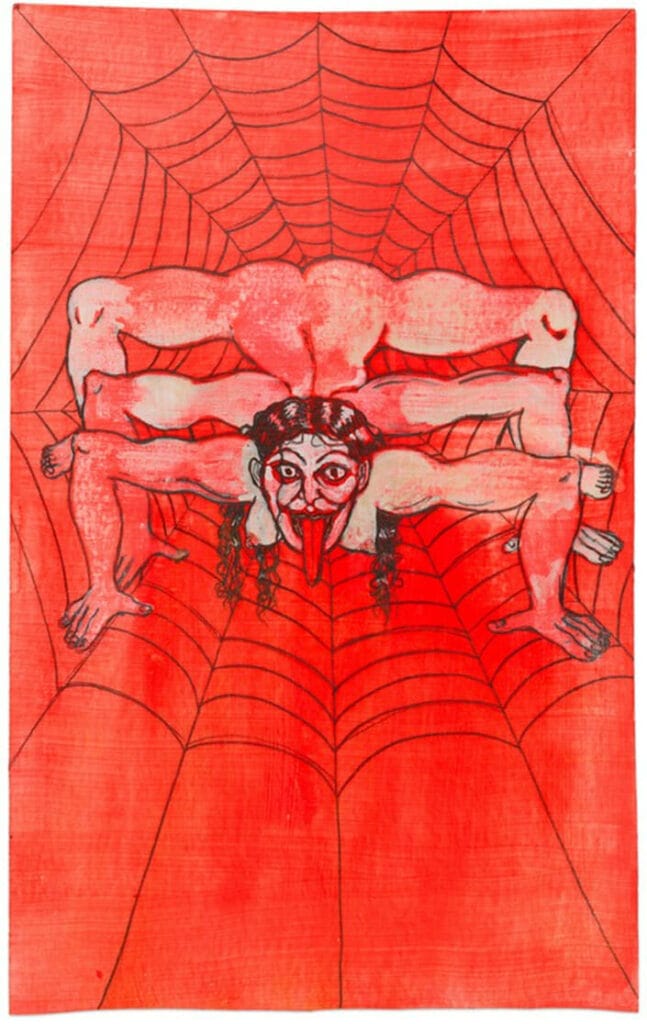
sans titre, 2022
acrylique, encre et collage sur carton 32 x 20 cm
D’ailleurs, n’est-il pas significatif que le mot « démon » lui-même soit une anagramme du mot « monde » ? Aux yeux de la société, les démon·e·s sont terribles. Et à vrai dire leurs corps à la lumière du jour font peur à voir. Mais quand l’obscurité se fait, on les entend raconter des histoires très douces qui sont presque toujours des histoires de révolte et d’amour. Le travail de Neïla, en ce sens, a quelque chose de profondément démonique : il nous emmène au royaume des ombres, comme pour nous prouver que ce royaume est un cœur dont le pouls porte, à l’infini, les larmes de rire de celleux qu’on chérira pour toujours.
Romain Noël
Romain Noël is a researcher and poet. His transdisciplinary research focuses on art forms in the age of extinction, the links between emotional life and magical practices, and anti-humanist ecologies. He co-edited the special issue of Critique magazine entitled “Vivre dans un monde abîmé” (“Living in a damaged world”). In addition to texts on contemporary art, he has published “BDSM Apocalypse” (Klima Magazine, lundimatin), “Pourquoi des potions à l’heure de l’Extinction” (Frûctose), “Mycélium, petit conte post-apocalyptique” (Le murmure éditeur), which he co-wrote with Youri Johnson, and “Devenir Médiums” (Les Presses du Réel). After studying at EHESS, he recently completed a thesis on contemporary art at the Centre d’Histoire de SciencesPo, entitled “La Vengeance des Affects: une aventure dont vous êtes le terreau”.
Neïla Czermak Ichti was born in Bondy in 1996. She lives and works in Marseilles. Through drawings and paintings, she depicts her family and her friends. The representation of apparently ordinary and trivial scenes refers to her beliefs, her cultures, and takes on magic and invisible dimensions.
Graduating from the École des Beaux-Arts de Marseille in 2021, her work has recently been shown at the Villa Arson in Nice, at MO.CO in Montpellier, at CAC Brétigny, and in the “Désolé” exhibition at the Edouard Manet gallery in Gennevilliers, curated by Mohamed Bourouissa.
At the invitation of Anna Labouze and Keimis Henni, Neïla Czermak Ichti is currently taking part in the “Après l’éclipse” exhibition at the Magasins Généraux in Pantin, and will be taking part in the Nîmes Triennale in 2024-
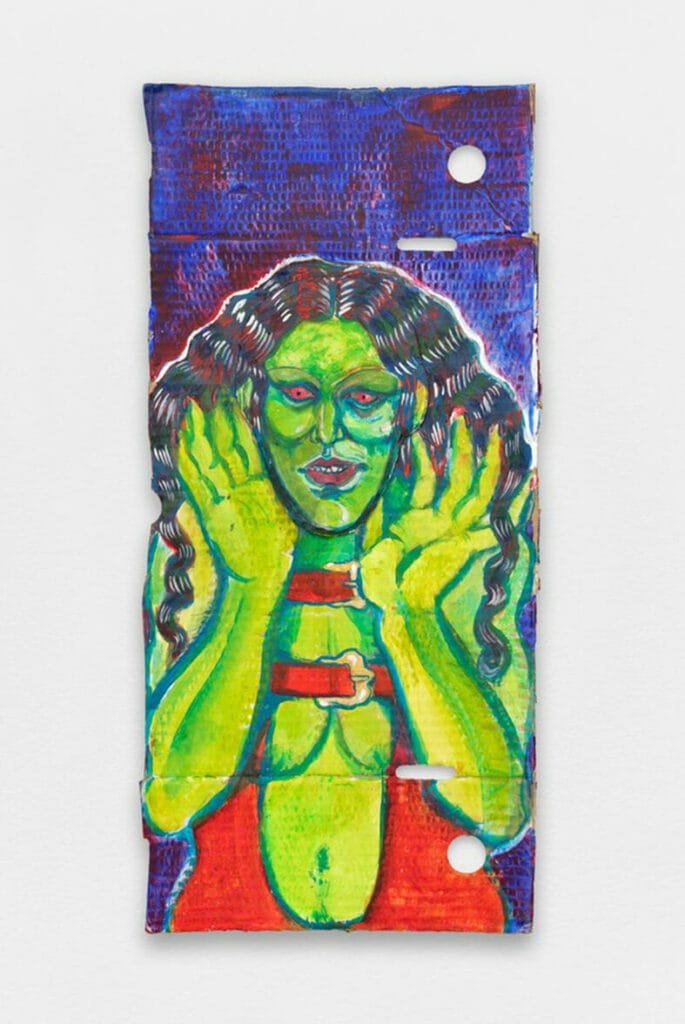
Galerie Anne Barrault
51 Rue des Archives, 75003 Paris, France


